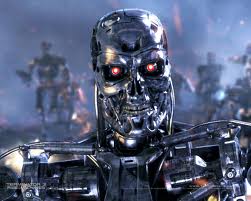By Aaron Thayer Wells, Modern Intelligentsia
SEPTEMBER 2011
The Digital Divide is a term that was coined during the late 1990’s to draw attention to the lack of computer ownership within ethnic cultural populations. Initially it was used as a catch-all phrase to illustrate the disparities that these communities faced, particularly as it pertained to their ability to learn from using technology while inside their households.

While the Digital Divide has allowed the promises of technology to be discussed, it has also crystallized the pervasive deficiencies that exist for those without access. The irony of the former led many to investigate the various implications surrounding those with technological access and those without. Gaining popularity with time, the term eventually landed within mainstream vernacular, with references to the Digital Divide appearing in myriad contexts, from news articles to speeches by politicians such as President Bill Clinton and Vice President Al Gore.
As the United States entered a new millennium, personal computer manufacturers faced increasingly intense levels of competition, both from US based firms, as well as those conducting business on US soil from abroad. While each jockeyed for their position as the manufacturer of choice, competition within this marketplace yielded slumping sales, declining margins, and prices that have been in a gradual free fall. Despite significant losses for manufacturers, consumers have steadily benefited from all of the former, whereas they now have more choices, an increasing number of manufacturer rebates to benefit from, and a greater emphasis on discounting by retailers.
A combination of the former factors, as well as others (such as advances in Internet technology and wireless networking), has made the Digital Divide less apparent within US minority communities. Many members of these communities have always been forced to do more with less. As a consequence, they have taken the initiative to bridge their technical divide by using less-expensive computer devices designed primarily for email, web browsing, and casual computing, such as cell phones and netbooks. In particular, the use of mobile media devices by African American and Latino youth has surged, so much so that today 51 percent of Hispanics and 46 percent of Blacks use their phones to access the Internet, compared with just 33 percent of Whites, according to a July 2010 Pew poll.
In particular, the use of mobile media devices by African American and Latino youth has surged, so much so that today 51 percent of Hispanics and 46 percent of Blacks use their phones to access the Internet, compared with just 33 percent of Whites, according to a July 2010 Pew poll.
However, gains such as these have been met with yet a new set of challenges, especially as they relate to minority youth using technology to learn. One of the primary challenges that has emerged is that another chasm has formed–the participation gap.
The participation gap is yet another divide between the have’s and have not’s, whereby youth who are familiar with technology use it seamlessly within their lives, and those who are passive technology consumers, on the other hand, use it primarily for social and/or entertainment purposes.
In addition to serving as a college administrator, I am exploring the participation gap and its impact upon the education of minority youth in an increasingly digital, technology-based world as an independent digital media and learning consultant with the United Negro College Fund Institute for Capacity Building. Evaluating the participation gap has brought various questions about the intersection of technology, culture, and learning to light. Specifically, there were a few that spoke to several dimensions of my blog, so I thought I would share.
First, within an online world where things are oftentimes not always as they seem, is there a way for educators to evaluate and monitor what and how minority youth learn from their interactions with web browsing and search engines? Subsequently, perhaps more importantly, can this data be captured without impending on student privacy?

Google is the new library for the large majority of American minority youth. It has replaced the brick and mortar learning institutions of old and provides information immediately at the touch of one’s fingertips. However, the irony within this power that looms within the realm of online learning is that, the same search engine which serves up a civil rights-centric site with legitimate and relevant information such as The Martin Luther King Jr. Center for Non-Violent Social Change at http://www.thekingcenter.org/ could serve up a seemingly similar domain, MartinLutherKing.org a site that proclaims to provide a Kwanzaa lesson, truths about Martin Luther King, MLK educational videos, a MLK pop quiz, and more! As the layers of the onion are peeled back, one will see that this domain is ACTUALLY dedicated to the proliferation of online hate and racism.
at http://www.thekingcenter.org/ could serve up a seemingly similar domain, MartinLutherKing.org a site that proclaims to provide a Kwanzaa lesson, truths about Martin Luther King, MLK educational videos, a MLK pop quiz, and more! As the layers of the onion are peeled back, one will see that this domain is ACTUALLY dedicated to the proliferation of online hate and racism.  There is no real way for a search such as this to be filtered, unless the user is trained to approach web browsing with scrutiny and therefore views all site information with a critical eye.
There is no real way for a search such as this to be filtered, unless the user is trained to approach web browsing with scrutiny and therefore views all site information with a critical eye.
Additional questions have also come to mind. How can minority-serving institutions such as Historically Black Colleges and Universities (HBCUs), Hispanic Serving Institutions (HSIs), and Tribal Colleges and Universities (TCUs) design, implement, and deliver curricula that addresses the participation gap? Furthermore, given the large concentration of minority youth with an interest in attending an institution such as one of the former, how can these schools leverage digital media in an effort to teach these students how to leverage technology?
The former are just several of the myriad questions that have elicited over the past several months.
Whereas more people in the U.S. are set to access the Internet via mobile devices than through desktop computers or other wired devices by 2015, the participation gap will only become increasingly significant with time.
If you are an educator, technophile or just would like to learn more about the participation gap, here are several additional resources:
NPR: Closing Digital Divide, Expanding Digital Literacy
National Education Association Conversation with MIT Professor Harry Jenkins
























































